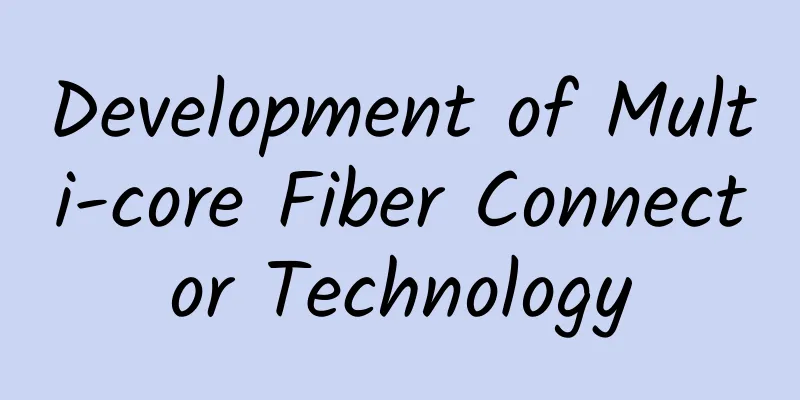|
Professor Ryo Nagase of Chiba Institute of Technology in Japan started with an informative presentation, focusing on research on advancing multi-core fiber connector technology.
Japan has led the development of optical communications technology since the field first emerged. The VAD method invented in the 1970s greatly improved performance and reduced the cost of optical fiber manufacturing. This technology is still widely used as mainstream optical fiber manufacturing technology around the world.
Physical contact (PC) technology, invented in the 1980s, has also made a significant contribution to achieving higher performance optical connectors at lower costs, and it is still used in most types of optical connectors.
These two basic technologies for building optical networks have been recognized as mainstream technologies for more than 25 years since they were introduced to the market, and both have been certified as IEEE milestones.
In Japan, a nationwide fiber-optic cable backbone network was built in 1985, and the world's first commercial fiber-to-the-home (FTTH) service was launched in 2001. In 2021, there were 36 million FTTH users in Japan. The demand for communication traffic continues to grow worldwide, and optical communication systems have undergone tremendous improvements. In 20 years, the signal capacity transmitted through a single optical fiber has increased by about 10,000 times. Figure 1: Euclid coupling mechanism in MU-type MCF connector On the other hand, single-mode fiber (SMF), currently used as the broadband medium, has a theoretical limit of 100 Tb/s per fiber, and there are concerns that there will be a capacity shortage within a few years if traffic demand continues to increase.
Against this backdrop, Japan established the "Extremely Advanced Optical Transmission Technology Technical Committee (EXAT)" in 2008 with the goal of further expanding optical fiber transmission capabilities. This was the first such committee in the world, and it clarified the concept of space division multiplexing (SDM) technology. One of these technologies is the use of multi-core fiber (MCF). Building an optical network with MCF requires new approaches such as MCF manufacturing technology, MCF connection technology (fusion splicing and connectors), MCF and SMF interconnection technology, and MCF optical amplification technology.
This article introduces the MCF optical connector technology first developed in Japan.
Optical Connector Technology Basics
In SMF, optical signals propagate over an area of about 10 meters, so in order to connect optical fibers, positioning must be performed with a high accuracy of better than about 1 meter.
On the other hand, in optical connectors, external forces may act through optical cables. In particular, in optical communication networks, optical connectors are installed at high density on terminal boards, and line switching work is performed every day in telephone offices, so cables of active lines are often touched during work. Even if a force acts on the cable, the connection performance must remain stable.
The optical connector housing is also elastically deformed by a physical contact technique that presses the sleeve together to maintain a stable connection. This deformation can reach tens of meters, making it difficult to guarantee the above-mentioned positioning accuracy required for SMF. To avoid this problem, a floating mechanism is used in which the optical fiber is fixed in a ferrule and the deformation of the housing does not affect the positioning of the optical fiber.
As described above, the physical contact technology and floating mechanism developed in Japan became the basis of subsequent optical connector technology, and these technologies are used in the SC type and LC type optical connectors that are currently in mainstream use. Figure 2: SC-type MCF connector MCF's Optical Connector Technology
In order to connect MCF, it is necessary not only to use a floating mechanism, but also to accurately adjust the rotation angle around the fiber axis. The Oldham coupling is a mechanism that satisfies these conflicting conditions, and it has long been used in the field of mechanical engineering. The function of this coupling is to accurately transmit the rotation angle even if there is shaft misalignment, but conversely, since shaft misalignment can occur without rotation, it is possible to meet the necessary conditions of the MCF connector.
The first practical optical connector for MCF was the MU-type MCF connector developed in Japan in 2012 (Figure 1). By applying Oldham's coupling mechanism, positioning accuracy is maintained, including the rotation angle. It has the characteristic that the connection loss does not fluctuate even if a tensile load is applied to the cable. In 2019, an SC-type MCF connector was developed that implements the same principle with a simplified structure (2) (Figure 2). Work is underway to practically apply optical connectors to optical communication networks using MCF.
in conclusion
In the field of optical communications, Japan has made significant contributions to the development of new technologies since the field began. The capacity limitations of current optical communications networks built using SMFs have become apparent, so we are conducting research and development to overcome this obstacle.
In Japan, we developed the basic technology of optical fiber connectors currently in use, and are developing new optical fiber connectors for MCF, which are indispensable for building optical fiber networks using MCF.
refer to
1. R. Nagase, K. Sakaime, K. Watanabe, and T. Saito, “MU-type multi-core optical fiber connector,” in Proc. IWCS 2012, 17-2 (November 2012).
2. K. Imaizumi and R. Nagase, “SC-type multi-core optical fiber connector with simplified structure,” in Proc. IWCS 2019, 8-1 (2019). |










